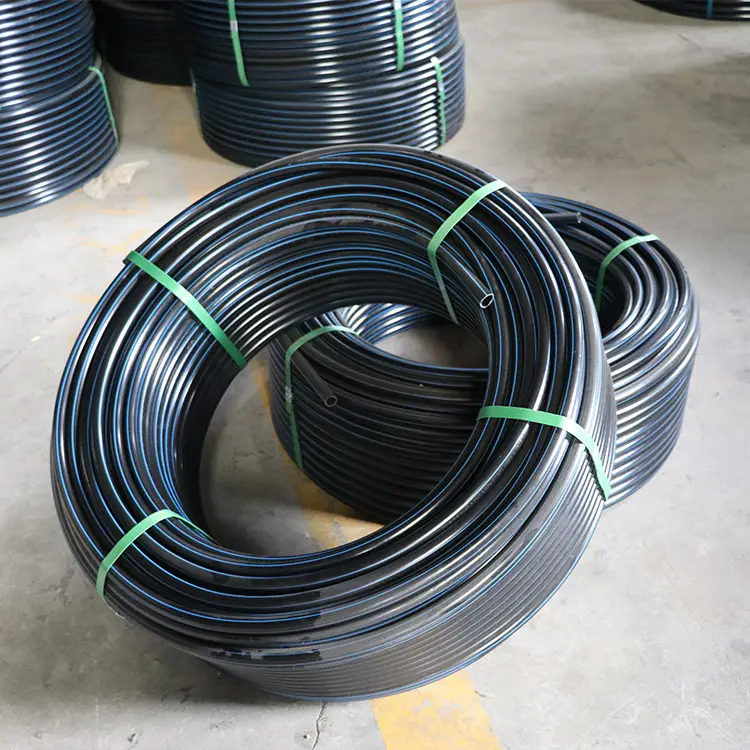Connection Methods of HDPE Pipes
2025-06-23
High-Density Polyethylene (HDPE) pipes are widely used in various industries due to their excellent durability, resistance to corrosion, and flexibility. They are commonly used in water supply, drainage, and gas distribution systems. One of the key factors contributing to the efficiency of HDPE pipes is the variety of connection methods available, which ensure secure, leak-free joints that can withstand pressure and environmental stress. In this essay, we will explore the primary connection methods used for HDPE pipes: mechanical joints, electrofusion, butt fusion, and socket fusion.
1. Mechanical Joints
Mechanical joints are one of the simplest and most commonly used methods for connecting HDPE pipes. This method involves the use of mechanical fittings, which can include flanges, compression fittings, and other hardware to join the pipes. The connection is secured by tightening bolts or using other mechanical locking mechanisms.
The main advantage of mechanical joints is that they are easy to install and require minimal specialized equipment. They can be quickly assembled and disassembled, making them ideal for temporary installations or where frequent maintenance may be required. However, they may not provide the same level of strength and leak resistance as fusion methods, particularly under high-pressure conditions.
2. Electrofusion
Electrofusion is a method that uses specially designed fittings with integrated electric heating elements. These fittings are inserted between two ends of HDPE pipes, and an electric current is passed through the heating elements. The heat generated causes the HDPE material to melt and fuse the pipe and the fitting together, creating a homogeneous, strong, and leak-free joint.
This method is particularly useful for connecting HDPE pipes in tight spaces or areas with limited access. It is also ideal for installations that require higher levels of joint integrity and durability, such as gas distribution systems. The main advantages of electrofusion include its reliability and the fact that the joint is as strong as the pipe itself. However, electrofusion requires specialized equipment, and the fittings can be more expensive than other methods.
3. Butt Fusion
Butt fusion is one of the most commonly used methods for joining HDPE pipes in both industrial and municipal applications. In this method, two pipe ends are heated using a heated plate until they reach the melting point. Once the proper temperature is achieved, the pipes are pressed together under controlled pressure, allowing the molten material to fuse and form a strong, permanent bond.
Butt fusion is highly reliable and provides a joint that is stronger than the original pipe, making it ideal for high-pressure applications. It is commonly used in large-scale projects, such as water distribution systems, wastewater systems, and gas pipelines. However, butt fusion requires specialized equipment and skilled operators, as it involves precise temperature and pressure control to ensure a proper fusion. Additionally, the process is time-consuming, particularly for large pipes, which may require longer heating times and more careful alignment.
4. Socket Fusion
Socket fusion is a method that involves inserting the end of an HDPE pipe into a matching fitting that has been heated to the proper fusion temperature. The pipe and fitting are both heated using a heated tool, and once they reach the appropriate temperature, the pipe is inserted into the fitting. The joint is then allowed to cool and solidify, forming a permanent bond.
Socket fusion is often used for smaller HDPE pipes, typically ranging from 1/2 inch to 4 inches in diameter. The method is relatively simple and quick, making it ideal for smaller-scale installations and repairs. The main advantage of socket fusion is that it produces a joint with excellent pressure resistance and is less likely to leak over time. However, it may not be suitable for larger pipes due to the difficulty in achieving consistent heating across larger diameters.

5. Advantages and Considerations
Each of the above methods comes with distinct advantages and limitations. The choice of connection method depends on factors such as the pipe diameter, pressure requirements, installation environment, and budget.
Mechanical joints are ideal for ease of installation and disassembly but may not offer the same long-term durability as fusion methods.
Electrofusion is excellent for creating strong, durable joints in tight spaces but requires more expensive fittings and specialized equipment.
Butt fusion provides the most robust and reliable joint for large-scale projects but requires skill and time for proper execution.
Socket fusion is quick and reliable for smaller pipes but may not be suitable for larger diameters.
Conclusion
HDPE pipe connection methods play a crucial role in ensuring the integrity and reliability of pipelines in various industries. Each method offers unique advantages depending on the specific requirements of the project. Whether it’s the simplicity of mechanical joints, the precision of electrofusion and butt fusion, or the speed of socket fusion, selecting the right connection method is essential for ensuring the long-term performance and safety of the pipeline. Proper selection, installation, and maintenance of these connections can significantly extend the lifespan of HDPE piping systems, making them a valuable solution in modern infrastructure projects.
As a professional manufacturer and supplier, we provide high-quality products. If you are interested in our products or have any questions, please feel free to contact us.